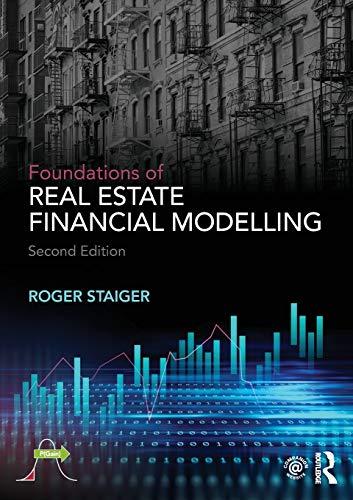The most recent financial statements for Retro Machine, Inc., follow. Interest expense will remain constant; the tax rate and the dividend payout rate will also
The most recent financial statements for Retro Machine, Inc., follow. Interest expense will remain constant; the tax rate and the dividend payout rate will also remain constant. Costs, other expenses, current assets, fixed assets, and accounts payable increase spontaneously with sales.
| RETRO MACHINE, INC. 2016 Income Statement | ||||||
| Sales | $ | 762,000 | ||||
| Costs | 597,000 | |||||
| Other expenses | 18,000 | |||||
| Earnings before interest and taxes | $ | 147,000 | ||||
| Interest paid | 12,000 | |||||
| Taxable income | $ | 135,000 | ||||
| Taxes (40%) | 54,000 | |||||
| Net income | $ | 81,000 | ||||
| Dividends | $ | 32,400 | ||||
| Addition to retained earnings | 48,600 | |||||
| RETRO MACHINE, INC. Balance Sheet as of December 31, 2016 | |||||||
| Assets | Liabilities and Owners Equity | ||||||
| Current assets | Current liabilities | ||||||
| Cash | $ | 22,140 | Accounts payable | $ | 56,300 | ||
| Accounts receivable | 34,460 | Notes payable | 15,500 | ||||
| Inventory | 71,420 | Total | $ | 71,800 | |||
| Total | $ | 128,020 | Long-term debt | $ | 121,000 | ||
| Owners equity | |||||||
| Fixed assets | Common stock and paid-in surplus | $ | 131,000 | ||||
| Net plant and equipment | $ | 230,000 | Accumulated retained earnings | 34,220 | |||
| Total | $ | 165,220 | |||||
| Total assets | $ | 358,020 | Total liabilities and owners equity | $ | 358,020 | ||
Complete the pro forma income statements below. (Do not round intermediate calculations and round your answers to the nearest whole number.)
| Pro Forma Income Statement | |||||||||||
| 15% Sales Growth | 20% Sales Growth | 25% Sales Growth | |||||||||
| Sales | $ | $ | $ | ||||||||
| Costs | |||||||||||
| Other expenses | |||||||||||
| EBIT | $ | $ | $ | ||||||||
| Interest | |||||||||||
| Taxable income | $ | $ | $ | ||||||||
| Taxes (40%) | |||||||||||
| Net income | $ | $ | $ | ||||||||
| Dividends | $ | $ | $ | ||||||||
| Add to RE | |||||||||||
Complete the pro forma balance sheet for each sales growth rate. (Do not round intermediate calculations and round your answers to the nearest whole number.) 15% Sales Growth:
| Pro Forma Balance Sheet | |||||||
| Assets | Liabilities and Owners Equity | ||||||
| Current assets | Current liabilities | ||||||
| Cash | $ | Accounts payable | $ | ||||
| Accounts receivable | Notes payable | ||||||
| Inventory | Total | $ | |||||
| Total | $ | Long-term debt | $ | ||||
| Owners equity | |||||||
| Fixed assets | Common stock and paid-in surplus | $ | |||||
| Net plant and equipment | $ | Accumulated retained earnings | |||||
| Total | $ | ||||||
| Total assets | $ | Total liabilities and owners equity | $ | ||||
20% Sales Growth:
| Pro Forma Balance Sheet | |||||||
| Assets | Liabilities and Owners Equity | ||||||
| Current assets | Current liabilities | ||||||
| Cash | $ | Accounts payable | $ | ||||
| Accounts receivable | Notes payable | ||||||
| Inventory | Total | $ | |||||
| Total | $ | Long-term debt | $ | ||||
| Owners equity | |||||||
| Fixed assets | Common stock and paid-in surplus | $ | |||||
| Net plant and equipment | $ | Accumulated retained earnings | |||||
| Total | $ | ||||||
| Total assets | $ | Total liabilities and owners equity | $ | ||||
25% Sales Growth:
| Pro Forma Balance Sheet | |||||||
| Assets | Liabilities and Owners Equity | ||||||
| Current assets | Current liabilities | ||||||
| Cash | $ | Accounts payable | $ | ||||
| Accounts receivable | Notes payable | ||||||
| Inventory | Total | $ | |||||
| Total | $ | Long-term debt | $ | ||||
| Owners equity | |||||||
| Fixed assets | Common stock and paid-in surplus | $ | |||||
| Net plant and equipment | $ | Accumulated retained earnings | |||||
| Total | $ | ||||||
| Total assets | $ | Total liabilities and owners equity | $ | ||||
Calculate the EFN for 15, 20, and 25 percent growth rates. (Do not round intermediate calculations and round your answers to the nearest whole number. A negative answer should be indicated by a minus sign.)
| 15% | 20% | 25% | ||||||
| EFN | $ | $ | $ | |||||
Step by Step Solution
There are 3 Steps involved in it
Step: 1

See step-by-step solutions with expert insights and AI powered tools for academic success
Step: 2

Step: 3

Ace Your Homework with AI
Get the answers you need in no time with our AI-driven, step-by-step assistance
Get Started


